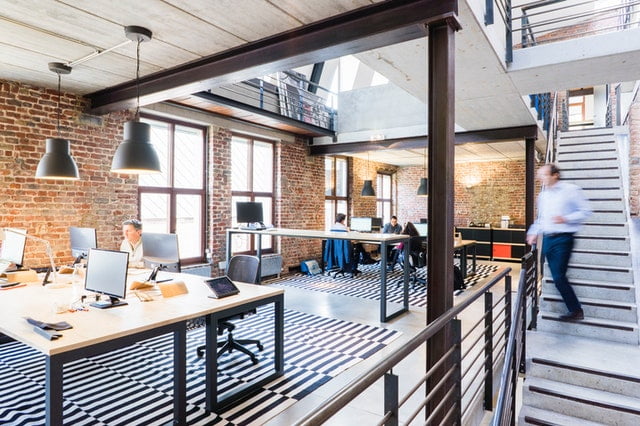Physical workspaces have a crucial impact on any business’s success. They influence a variety of factors, from the health of team members to the climate of inclusion, creativity, and productivity. After a year that countless team members spent working from home, many offices are finally reopening. However, according to recent surveys, peoples’ feelings about returning to office work are mixed.
Statistics published by Fortune indicate that only 40% of employees want to return to an office environment as it was before the pandemic. To meet the needs of the other 60%, office workspaces have to adapt. Here are five crucial design tips on how to do that – and create an office space that fosters productivity.
To begin with, offices should offer a diversity of spaces for different activities.
For years, open-plan offices were hailed as harbingers of productivity. However, surveys show that exclusively open-plan workspaces lead to lower employee satisfaction, higher stress levels, and more sick days.
Conversely, while cubicle-only offices offer a quieter work environment, they also limit interaction and collaboration.
Instead, experts recommend identifying the types of activities team members perform – and designing dedicated spaces accordingly. Provide customizable personal spaces for team members to retreat to in order to focus, as well as open spaces for collaboration and socializing.
Lighting: Prioritizing Natural over Artificial
Another often-neglected but crucial productivity design factor is lighting.
While sleek floor lighting or tastefully recessed lights can be perfect design accents, stylish lighting choices are often not ideal for concentration.
Studies have widely shown that natural daylight is best to keep energy levels high, and maintain focus.
Consequently, office design should focus on providing as much natural light as possible, through large, well-oriented windows, glass partitions between office spaces, and high ceilings that allow for a natural flow of light.
Artificial lights should be bright and close to the daylight spectrum. Position them carefully to provide indirect lighting, to avoid team members having to work against a glare.
Harnessing Color Psychology
Despite its proven benefits, color is still overlooked as an effective tool for productivity. A fresh coat of paint could transform the atmosphere of your office and boost morale among your workers. As an added bonus, if you are thinking of renovating your bathroom, choosing toilet partitions that match your new office color will create a great sense of harmony.
Many office spaces are designed with aesthetics in mind, rather than the needs of team members. Your brand colors are purple and yellow? Then that’s a natural choice for accents in your office design, right?
However, research shows that color choice has a subliminal but deep impact on productivity and team psychology.
Researchers found that shades of green are linked to creativity, and a blue palette to productivity. Red, on the other hand, fosters attention to detail and analytical thinking.
Colors to avoid, according to recent data? Bland whites and generally-unpopular yellows.
Dampening Down the Noise
Noise is hands-down the most frequent complaint when it comes to office productivity killers. Especially in open-plan offices, the level of ambient noise is directly linked to stress, anxiety, and decreased focus.
To counter this, adding design elements to lower noise levels is crucial. Consider sound masking systems such as acoustic panels, sound-friendly furniture, and noise-muffling elements such as greenery.
Providing Pre-Planned Storage Spaces
Finally, clutter puts a major damper on office productivity – it doesn’t take Marie Kondo to realize that. When desks and shelves are buried in files and rarely-needed equipment, it is hard to find space to work and concentrate.
To avoid this, plan in plenty of storage space and organization elements during the office design phase. Drawers, shelves, file cabinets, organizing trays – all these can help team members maintain a clutter-free, productive work environment.


